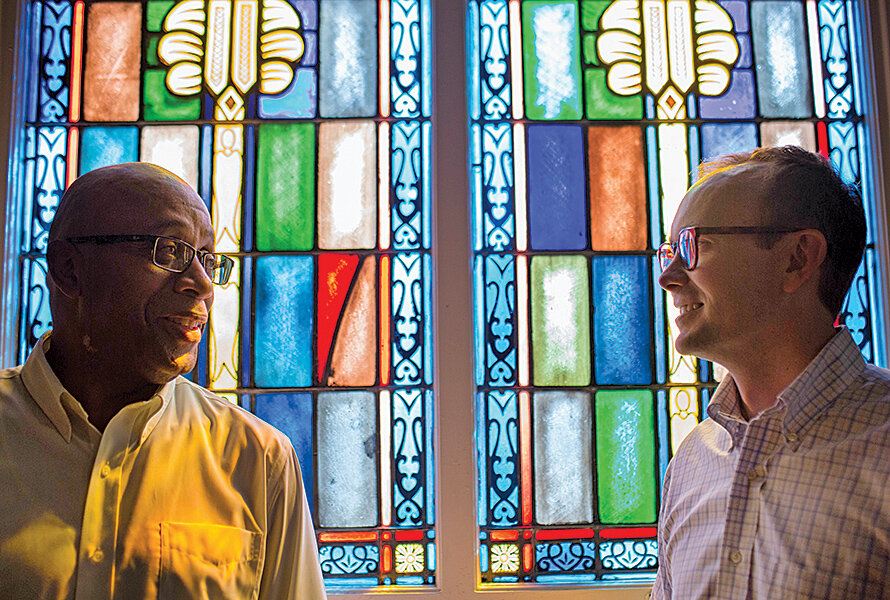Breaking down mental walls
Loading...
For all the justifiable pride that Americans have in their egalitarian democracy – which has been fought for, expanded, and defended for 240 years – race relations is our telltale heart. It beats under the nation’s floorboards and in our consciences. We wish we didn’t hear it, but it persists, reminding us that black Americans and white Americans too often live in two different worlds.
The narrative most white Americans carry around with them goes like this: The unthinkable cruelty of slave markets and human bondage was defeated by the Civil War and the enactment of the 14th Amendment. There followed a more subtle system of repression under Jim Crow laws. But through righteous defiance and nonviolent struggle – and the bravery of Rosa Parks, Martin Luther King Jr., and a generation of both black and white protesters – equality triumphed.
Wil Haygood, a scholar in residence at Miami University in Oxford, Ohio, and author of “Showdown: Thurgood Marshall and the Supreme Court Nomination That Changed America,” describes a different reality. For decades before his confirmation as the first black on the nation’s highest court, Marshall battled cases of police brutality against blacks. That issue was invisible in majority white America but well known in black communities. Little wonder that the spate of recent videos of police shootings have shocked white people while confirming what many black people knew or suspected.
Two decades ago as reporters for The Boston Globe, Wil and I set out to investigate the issue that Nissa Rhee explores in a Monitor cover story (click here): Are race relations getting better or worse? The answer then, as now, is mixed. In some communities and some demographic groups, black, white, Hispanic, and other groups mix easily. There is a thriving black middle class. Prominent individuals – from professors to CEOs to the president – are black.
But as Nissa’s report shows, the de facto segregation that remains in many communities contributes to the misunderstanding, mistrust, and violent encounters with police that have in recent years caused both whites and blacks to tell pollsters they are pessimistic about race relations. And pessimism does little to breach the mental walls that separate the lives of many blacks and whites.
“Segregation laws came down not by hearts and minds,” Wil notes, “but by laws and bayonets in Little Rock, Selma, and other places [in the South]. Breaking down the walls of mental segregation takes education, insight, and empathy on both sides of the fence.” The slow growth of understanding is a process that is set back each time there is an eruption of racial conflict. Anger and reaction cause many people to retreat into their homogeneous communities and try not to think about race.
But the telltale heart still beats. The current low point that Americans say exists in race relations should be all the more reason to recommit to the goal of a color-blind, integrated society. That goal, historian John Hope Franklin argued, is “in the long run the only way you can bring about any kind of peaceful, diverse society.”






